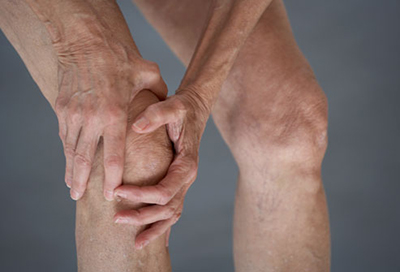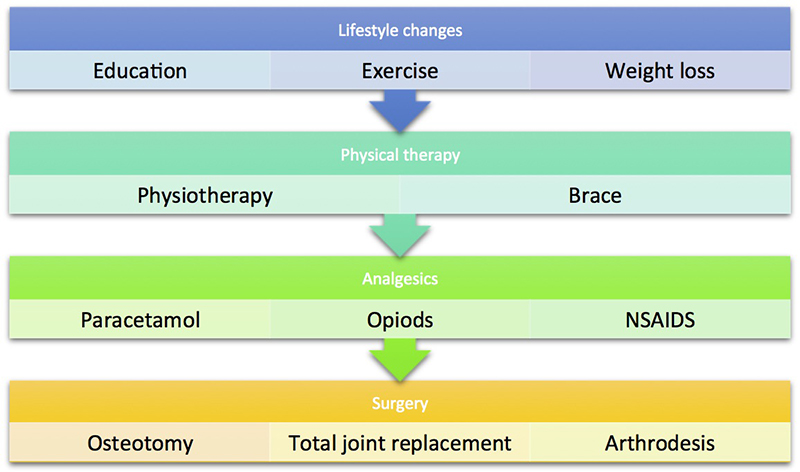
Source: www.webmd.com
Osteoarthritis of the knee is one of the most common conditions patients present with to the Orthopaedic clinic. These patients will be complaining of bilateral knee pain and occasionally present late with deformity of the knee. Osteoarthritis can be classified as Primary Osteoarthritis where there is no obvious antecedent factor or Secondary Osteoarthritis when there is prior pathology to the involved joint.
Causes
There are many factors which can lead to Osteoarthritis. Aging is one of it. As we age, our cartilage losses its water and proteoglycans contents making it less elastic and weakened. Trauma or previous inflammatory disorders such as septic arthritis and Rheumatoid arthritis can damage the articular cartilage and lead to the early development of Osteoarthritis. Genetic defects in type II collagen synthesis has also been implicated in the development of this condition.
There are four cardinal pathological features in the x-ray of patients with Osteoarthritis:
- Narrowing of the joint space
- Subchondral cyst formation
- Sclerosis of the articular surface
- Osteophyte formation
In the earliest stage, there is softening and fibrillation of the articular cartilage. This is followed by progressive disintegration of the cartilage leading to exposure of the underlying bone. Meanwhile, at the edge of the joint, there is formation of osteophytes or multiple, small bony outgrowths. The bone beneath the damaged cartilage is dense and sclerotic and usually there will be one or more cysts containing thick gelatinous material in the immediate vicinity. This happened due to formation of new bone compensating the loss of original bone due to disintegration process.
Symptoms
Patients will often complain of dull aching pain over the affected joint and worsens progressively. Typically the pain is aggravated by weightbearing and exertion and relieved by rest. They often complain of stiffness of the joint especially after a period of prolonged immobilization. Other complains include swelling of the affected joint along with deformities secondary to capsular contracture or joint instability. In severe cases, patient may complain of sudden locking of the joint during ambulation (walking) due to the presence of loose bodies. The most distressing symptom is pain and loss of function of the involved joint causing severe restriction and limitation in performing daily activities. The symptoms can be made worse if the patient is obese which leads to increase in loading and mechanical stress in some part of the articular surface.
On examination, there may be swelling, deformities and wasting of the surrounding muscles secondary to long standing dysfunction of the affected joint. If osteophytes formation is florid there will be irregularity along the bony edges. The range of movement of the affected joint may be limited. Crepitus or crackling sounds maybe felt throughout the motion of the affected joint.
Xray
X-ray of the affected joint is the most basic but very useful investigation to confirm the diagnosis. It will reveal joint space narrowing, sclerosis of the subchondral bone, cyst formation as well as the formation of osteophytes around the joint margin.
Management
Management of osteoarthritis depends on the joint involved, stage of the disorder, severity of the symptoms, the age of the patient and his/her functional need. In early stage of the disorder, the principle of management include maintain movement and muscle strength, protect the joints from overloading, to relieve the pain as well as lifestyle modification. Treatment can be divided into operative and non operative methods.
Non Operative Treatment
Lifestyle modification
Weight reduction for obese patient is important to reduce the excessive loads to the weight bearing joints, especially the knee joint. Wearing shock absorbing shoes does help in reducing impact to the weight bearing joints as well. Patients should be advised to minimize activities that may stress the joint further especially jogging and running. For these patients, swimming and cycling are the most suitable and safe workout for them.
Physical therapy
It is directed at maintaining the joint mobility and improving muscles strength which aids in adding stability to the joints.
Pain Relief
- Application of warm or ice compression on the affected joint. This can be repeated several times per day.
- Local application of topical analgesia (painkiller) can also be provided.
- Oral analgesic (painkiller) based on the severity of the pain.
Operative Treatment
- Joint debridement involves removal of loose bodies, cartilage tags or interfering osteophytes. Nowadays it is done arthroscopically. It is considered a temporary measures to reduce pain of the affected joint
- Corrective osteotomy is aiming at redistributing the loading forces towards less damage part of the joint and it may delay or halt the progression of the articular damage.
- Total Knee Replacement is usually offered if non-operative managements fail. It promises improvement lasting for 15years or longer.
- Arthrodesis or joint fusion is done to ameliorate pain at the expense of sacrificing the joint motion. This is usually the last resort.
Summary of management of Osteoarthritis

The decision on the management will be done following details discussion between you and your attending doctors. You don’t have to live with the pain. Please come to us should you have this problem.
Dr. Ahmad Mahyuddin is an orthopedic surgeon working in Pahang. Know more about him in The Team page.
[This article belongs to The Malaysian Medical Gazette. Any republication (online or offline) without written permission from The Malaysian Medical Gazette is prohibited.]
